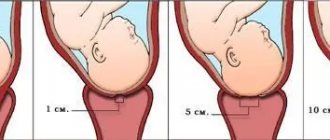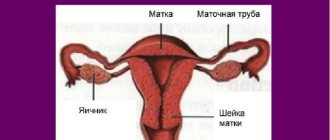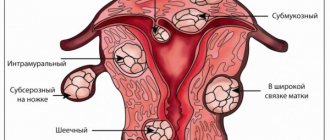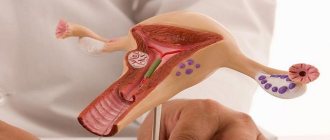Author: Life science/shutterstock
This is a surgical operation in which the vagina is narrowed by removing excess tissue.
Many women face this problem, and it mostly happens after childbirth. Because after the birth of a child, the vagina and cervix open and sometimes are not able to restore their previous shape.
It is also not uncommon for women to experience decreased sensitivity during sexual intercourse; this is also reflected in the male half; they complain of a lack of friction between the penis and the walls of the vagina. After some time, vaginal prolapse may occur, as a result of which the normal functioning of nearby organs is disrupted.
The main reasons that can provoke deformation of the cervix and vagina:
- difficult childbirth;
- diseases that lead to changes in the genital organs;
- abortion;
- hormonal imbalance (may occur with age).
In most cases, such changes in the genitals do not appear, and a gynecologist can determine this after an examination. Such deformation can lead to the development of serious diseases. Defects in the genital organs can provoke the development of dangerous infections, and inflammatory processes can result from all sorts of complications and pathologies. In addition, such changes cause miscarriages, difficult pregnancies and difficult childbirth.
Thanks to vaginoplasty, it is possible to restore the previous shape that was before the birth of the child.
The operation is performed under local anesthesia and lasts about 2 hours, depending on its complexity.
What does uterine plastic surgery mean for prolapse: methods of treating pathology and reviews from women
The displacement of the uterus below physiological boundaries is called prolapse.
The organ takes an abnormal position due to weakening of the muscle fibers, fascia and ligaments that hold the organ.
A functional disorder causes physical and mental suffering to a woman and can lead to loss of ability to work.
The pathology is considered common in clinical practice and is more often diagnosed in patients 50 years of age and older.
The normal location of the uterus is determined by its own tone, ligamentous and muscular apparatus, and mutual position with neighboring organs.
The essence of pathology
When prolapsed, the cervix and bottom of the organ shift below their anatomical boundaries, but do not extend beyond the genital opening.
The pathology is accompanied by radiating pain to the sacrolumbar region and pressure in the abdomen.
Prolapse of the uterus leads to stagnation of lymph and blood, and tissues are deprived of nutrition.
Advanced pathology provokes diseases of the bladder, renal pelvis, proctological problems arise.
The protruding part of the uterus is injured and becomes covered with bleeding ulcers.
- During the last months of pregnancy, the pelvic muscles are under a lot of pressure during this time, which can cause them to weaken.
- Difficult and lengthy labor. Breech presentation of the fetus, ruptures of the perineum, seriously damage the muscles.
- Congenital defective location of the uterus.
- The presence of tumors in the pelvic organs additionally loads the ligaments of the pelvic area.
- Obesity creates high intra-abdominal pressure, which causes uterine displacement.
- Previous surgery.
- Estrogen deficiency during menopause.
- Neurological disorders.
- Connective tissue dysplasia.
- Disturbed innervation of the genitourinary diaphragm.
Factors predisposing to the development of pathology are physically demanding work activities associated with heavy lifting, chronic cough, and old age..
Colpopexy - surgery for prolapse of the vaginal walls
Colpopexy: what is it?
Colpopexy (colpos - vagina, pexia - attachment), or vaginopexy is a plastic surgery for prolapse and prolapse of the vagina, which involves suturing and fixing the anterior or posterior vaginal wall to the internal structures of the abdomen (ligaments, fascia). As a rule, the use of this technique alone is ineffective: the risk of recurrence of vaginal wall prolapse is very high. The emergence of new materials and technologies makes it possible to obtain an excellent effect from the “old” operation, which was first performed in 1889.
One of the first methods of treating vaginal prolapse, colpopexy is now used only in certain situations. The operation helps to temporarily remove pelvic organ prolapse, but does not solve the main problem - it does not strengthen the muscles of the perineum. However, if colpopexy is supplemented with levatoroplasty and suturing of a mesh implant, then the effect of surgical correction of prolapse of the vaginal walls will be optimal.
3 reasons to contact the Center for Gynecology, Reproductive and Aesthetic Medicine
The largest and most modern gynecology clinic in Moscow
The latest technologies and equipment!
Specialists trusted by thousands of grateful clients!
Types of operations
The following types of vaginal plastic surgery are practiced:
- anterior colpopexy, used for cystocele (prolapse of the anterior vaginal wall);
- posterior vaginopexy for rectocele (prolapse of the posterior wall).
Depending on the surgical approach, the following types are possible:
- abdominal ventrofixation with colpopexy (attachment of the uterus and vaginal walls to the anterior abdominal wall), which is now used extremely rarely;
- vaginal colpopexy, accompanied by complete removal of the uterus and fixation of the vaginal walls to the internal ligaments of the small pelvis;
- laparoscopic vaginopexy with attachment of the uterus to the anterior abdominal wall;
- extraperitoneal colpopexy via vaginal access with suturing of polypropylene mesh.
Degrees of uterine prolapse
There are 4 degrees of uterine prolapse:
- The first initial degree of prolapse is characterized by weakened pelvic floor muscles, the cervix is at the level of the vestibule of the vagina.
- In the second degree, during physical exertion, part of the uterus comes out of the genital slit.
- In the third degree, the cervix and part of the uterine body protrude from the genital tract. This degree is also called partial uterine prolapse.
- In the fourth degree, the uterus falls out completely.
Plastic surgery for uterine prolapse allows you to restore the pelvic floor muscles and prolapsed vaginal walls, as well as correct the entrance and capacity of the vagina.
If the pathology affects the bladder and rectum, then during the operation the defects are restored and the function of the organs is returned to normal. The scope of plastic surgery is selected individually, taking into account the degree of the disease and disorders of neighboring organs.
Minor anatomical displacement of the uterus can be treated conservatively. If an advanced stage is diagnosed, surgical intervention will be required. Modern clinics offer several methods of surgical treatment, the choice of which depends on a number of indicators. Compliance with medical instructions during the recovery period is of great importance.
To treat first-degree pathology, strengthening exercises and hormonal therapy are used. Women are also recommended to use a vaginal ring and a special bandage.
Types of operations for cervical prolapse, patient reviews
No woman is immune from uterine prolapse. This pathology affects well-being and significantly reduces the quality of life. In the initial stages, the problem is eliminated using conservative methods. If organs are severely displaced, surgical intervention is indicated. Reviews after surgery for uterine prolapse are positive. This is the best way to treat the disease and help eliminate the problem.
Diagnosis of the disease
The diagnosis is made after a gynecological examination. A vaginal-abdominal examination is performed to assess muscle tone, the condition of the pelvic floor, uterus and appendages.
If necessary, colposcopy and cervical biopsy are performed.
To diagnose the pathology, consultation with a urologist and proctologist is also required..
Urological examination includes urine analysis, bacteriological culture, excretory urography, ultrasound of the kidneys, and chromocystoscopy.
A proctological examination is necessary to determine the rectocele and its severity; the presence of hemorrhoids and sphincter insufficiency are also checked.
To determine the degree of prolapse, the patient must push, after which a vaginal and rectal examination is performed..
If the walls of the vagina, bladder and rectum are displaced, the woman is registered at the dispensary.
Delaying surgical intervention for grade 2-3 uterine prolapse can lead to an emergency and technically difficult operation.
Is it possible to independently detect uterine prolapse? Read here.
Shortening of ligaments
Plastic surgery of a displaced cervix during prolapse may involve the surgeon working with the cruciate ligaments that support the organ.
It is performed laparotomically and combined with vaginal correction. During the operation, a hole is formed in the broad ligament and the round ligament is passed through it, bringing it to the back surface of the uterus. The same thing is done on the other side. Then the left round ligament is fixed to the right uterosacral ligament using synthetic threads. The same is done on the opposite side. The shortened ligaments are secured to the posterior wall of the uterus. Then the sacro-uterine ones are fixed to each other with two or three sutures.
This type of plastic surgery in gynecology for prolapse of the uterus is indicated for young women, as it allows them to preserve childbearing capabilities. But the lack of additional support materials makes the disease more likely to recur. Ligamentous fibers do not lose their ability to stretch.
At the end of the rehabilitation period, the woman will need to stop lifting weights, but do Kegel exercises to naturally maintain muscle tone.
Indications for use
Uterine prolapse is a progressive pathology and in most cases requires surgical intervention.
Surgical treatment is prescribed to restore the position of the uterus and neighboring organs, normalize the reproductive, urinary system and intestines.
Indications for plastic surgery are:
- Drooping anterior or posterior vaginal walls.
- Incompetent pelvic floor muscles
- Myofascial defect of the rectovaginal septum.
- Sensation of a foreign body in the vagina.
- Impaired urination and bowel movements.
Indications
Women with uterine prolapse or prolapse are prescribed conservative therapy in the initial stages. As the disease progresses, surgery is performed. The method of intervention depends on the following factors:
- Stages of descent. Radical treatment is used for 3 and 4.
- Presence of concomitant diseases. The development of fibroids, formations in the appendages, endometriosis - indications for surgery.
- Desires to realize reproductive function. When planning a pregnancy, it is recommended to have the uterus sutured in advance.
- Age. Interventions, including plastic surgery, are prescribed more often to young people. Elderly women with serious problems with the uterus are advised to remove the organ.
The operation is required if the patient suffers from severe pain, when the pathology affects intimate life, provokes the appearance of fears and complexes.
Treatment options
In each case, the choice of surgical intervention is recommended by a specialist.
What methods are used to eliminate pathology in gynecology and how is it done?:
- Colporrhaphy is a surgical intervention aimed at restoring the physiological position of the organ, strengthening the walls of the vagina and pelvic floor. There are three types of colporrhaphy: anterior, posterior, and Lefort-Neugebauer operation.
- The laparoscopic method of surgery is recognized as the most minimally traumatic way to eliminate pathology. The operation is performed under the supervision of a video camera; instruments are inserted into the cavity through small punctures. Laparoscopy is characterized by minimal pain, no scars, and short-term rehabilitation.
- Uterine fixation is chosen by patients planning to have a child. During the operation, the organ is attached to the abdominal wall or sacral bone. For this purpose, a special mesh prosthesis is used, which performs the function of a muscle ligament. The prosthesis is made of polypropylene or prolene; the hypoallergenic material is highly durable.
- Laparoscopic promontofixation is recognized as one of the effective methods. During plastic surgery, a bioinert implant is used to restore and tighten the normal position of the uterus.
- Mesh sacrovaginopexy . During the operation, the dome of the vagina and uterus is strengthened to the protrusion of the sacrum in the pelvic area using an endoprosthesis made of polyvinyl chloride material. The prosthesis provides strong fixation of the organ in its anatomical position.
- If the neck has lengthened and subsided, plastic surgery is performed to remove excess tissue . Part of the neck is amputated, the cardinal ligaments at the base are cut and attached to the anterior wall.
- Hysterectomy - complete removal of the uterus - is prescribed to women at menopausal age, or when other methods of combating pathology are unsuccessful.
Carrying out the operation
Before surgical correction of uterine prolapse, a woman should undergo a diagnostic examination. Mandatory are a general blood test, hemostasis, determination of the group and Rh factor, urine analysis, RW and HIV, hepatitis. If there are no contraindications to uterine plastic surgery, the patient is admitted to the hospital.
In 60-70% of cases, the operation is performed on one of the walls. According to statistics, more often women complain about prolapse of the posterior wall.
Depending on which part is stretched, there are several types of plastic surgery:
- front;
- back;
- tightening of both walls with fixation of ligaments.
During plastic surgery, the surgeon cuts off a flap of mucosal tissue in the problem area. The pieces are then sewn together and the muscle layer is strengthened. In the absence of signs of atrophy, the doctor performs suturing of the ligaments and walls that secure the uterine cavity. If sexual activity is not a priority, the woman may have her vagina sutured. This treatment method is the most minimally invasive and effective. A contraindication to its implementation is the presence of cancer and certain diseases of internal organs.
During anterior colporrhaphy, after exposing the cervix, the anterior vaginal wall is removed. Excess soft tissue is excised and the subcutaneous tissue is cut. The next step is to suture the fascia and connective membrane to give the uterus the correct position. A catheter is installed to monitor bladder function.
When performing posterior colporrhaphy, the condition of the vessels is carefully monitored. After the operation, a tampon soaked in disinfectant ointment is placed into the vaginal cavity. You are not allowed to walk or stand up for two days.
When diagnosing uterine prolapse at an early stage, the median colporrhaphy method is used. As a result of such plastic surgery, the organ is sutured on both sides, which prevents its further prolapse. Additionally, vaginal plastic surgery, shortening of muscle tissue or suturing of the perineum is required.
If uterine ptosis negatively affects the functioning of the intestines or bladder, the doctor corrects their location during surgery. If necessary, combine vaginal and laparoscopic access. In case of prolapse of the cervical stump after radical surgery, a mesh prosthesis for the walls is used. It functions as ligaments and fixes the uterus.
After plastic surgery, the patient remains in the hospital for a week. Before discharge, an examination by a gynecologist and an ultrasound examination are required. If the lift is ineffective, removal of the uterus and part of the vaginal mucosa is indicated. This method is used more often in elderly and mature women with realized reproductive function. In this case, psychological preparation and rehabilitation of the patient is of great importance.
It is important before deciding on uterine plastic surgery to verify the doctor’s qualifications. He must be a gynecologist; intimate lifting has many nuances. Regardless of the invasiveness of the chosen method, the specialist must be a gynecological surgeon, not a cosmetologist.
Recovery period
During the rehabilitation period it is necessary:
- Taking an antibacterial drug to eliminate the risk of inflammation.
- Carrying out antibacterial treatment of the perineum. Use of sanitation and wound healing suppositories.
- To avoid constipation, it is preferable to eat semi-liquid foods.
- It is forbidden to sit and strain the pelvic muscles for two weeks.
- Avoid overfilling your bladder.
- Do not have sexual intercourse for 40-50 days after the operation.
- Gradual physical activity is allowed no earlier than a month after surgery.
Why do cervical plastic surgery?
Indications for plastic surgery are:
- malformations of the reproductive organs;
- formation of adhesions and scars on the organ after surgical interventions;
- delivery, which resulted in serious ruptures;
- violation of the shape of the cervix after an abortion;
- prolapse or prolapse of an organ;
- hypertrophic changes in the uterine cervix (for example, its lengthening);
- the presence of ostomy-cervical insufficiency;
- change in shape due to disease or age-related changes.
The above reasons are a fact of starting to think about plastic surgery. Drug treatment is powerless here.
Types of cervical plastic surgery
The operation has several techniques. This:
- Laparotomy surgery. In this case, the surgeon penetrates the neck through the peritoneum. The procedure is very traumatic. Heavy bleeding may be present, and the postoperative period is difficult and long. But, such manipulation makes it possible to examine all nearby organs and simultaneously eliminate their pathology.
- Laparoscopic cervical plastic surgery. The safest and most gentle. There are no large incisions, as a result of which the woman comes to her senses very quickly. In this case, 3 punctures are made in the abdominal area, through which all the necessary instruments are inserted (camera, pump, knives, etc.)
- Vaginal surgery. With this method, the doctor examines the organ, finds and eliminates all deformities.
Currently, the last two methods are mainly used.
Reviews
Despite the fact that surgery is considered the only effective way to treat prolapse, not all doctors decide to carry out a radical technique. The examination sometimes takes several months and often, even with complete loss, doctors continue conservative treatment, despite the fact that it is ineffective.
Based on reviews from women, it is clear that gymnastics and swimming are ineffective methods. Many patients undergo a paid procedure, since government agencies constantly encounter difficulties when issuing referrals and establishing a diagnosis. Surgery for prolapse proceeds without complications. Women are satisfied with the result, there is no chance of relapse. They say that the radical therapy method has improved their sex life and condition.
How to prepare for cervical plastic surgery?
Preliminary preparation may take a certain amount of time. In 1-2 weeks a woman needs to undergo:
- ultrasound diagnostics of the kidneys, genitourinary organs and peritoneum;
- X-ray or fluorographic examination of the sternum;
- consultation with a local therapist;
- electrocardiogram.
A set of laboratory tests is required:
- general tests (blood and urine);
- assessment of blood clotting (tests in the form of coagulogram and hemostasiogram);
- biochemical study of blood cells;
- tests for HIV infection, syphilis and hepatitis;
- determination of Rh factor and blood group;
- smear from the cervical area (oncocytological);
- a smear from the area of the cervix and vagina, which will show the state of the microflora.
Procedure
Cervical plastic surgery after childbirth or for any other reason is performed according to different schemes. In some cases, it is necessary to sew up tears, in others to shorten the organ or remove a tumor. In all cases, stitching and suturing are done with threads that dissolve on their own. This process usually takes about a month.
The woman is placed on the operating table or on a gynecological chair (depending on the chosen technique) and her cervix and vagina are treated with an antiseptic. If the operation is laparotomic or laparoscopic, then the abdominal area is additionally treated.
If the laparoscopic method is chosen, then 3 punctures are made in the peritoneal area and instruments are inserted. During laparotomy, layer-by-layer tissue dissection is performed and expansion is performed. If this is done through the vagina, then speculums are inserted into it and expanded. Here the operation can be wedge-shaped, cone-shaped or high.
If there are deformations of the organ, they are removed along with the muscle fibers. A new cervical canal is formed. The surgeon can work with both a laser and a radio wave knife.
The operation can last 30-40 minutes. General or local anesthesia is used.
See photos below before and after cervical plastic surgery.
Types of interventions and the course of the operation
In gynecology, there are many methods of radical treatment for total and incomplete uterine prolapse. Doctors use effective and non-traumatic ones. Surgery for uterine prolapse is performed using anesthesia. The duration of intervention and rehabilitation depends on the specific technique.
Recommendations for preparation:
- following a gentle diet that prevents the formation of gases in the intestines;
- carrying out a cleansing procedure (2 hours before surgery);
- refusal to eat and drink on the day of intervention;
- eliminating contraindications and undergoing examination.
Anterior colporrhaphy
It consists of establishing the correct position of the uterus and its cervix. During the operation, the vaginal wall is removed from the pelvis. The stretched tissue collected on it is cut off. Then the vaginal wall is sutured. This method is effective when the uterus and cervix are displaced forward, and also when the location of the bladder is incompletely changed.
Posterior colporrhaphy
The operation is performed on the back wall of the vagina. After positioning the woman in a chair and treating the perineum with an antiseptic, they begin to expose the cervix. After removal, the walls are grabbed and excess tissue is cut off. The subcutaneous tissue is then incised (to gain access to the fascia). They are sutured, thereby placing the organs in the correct position.
Fixation of the uterus
Access during surgery can be transvaginal or abdominal. The sacral bone or abdominal wall is used as an object of fixation. The prosthesis, made of prolene, replaces ligaments in function. It is considered durable and hypoallergenic. The product is placed in the uterus and secured with thread. Through the formed channel, the ends of the prosthesis are brought out to the sacral bone or peritoneum.
Lefort-Neugebauer operation or median colporrhaphy
After exposing and pulling the cervix towards the perineum, small flaps are cut from the vaginal walls. Then the exposed surfaces are stitched together. As a result, the uterus cannot move due to its support on the stitched parts. Then vaginal plastic surgery is performed, which consists of partial excision and suturing of the labia.
Hysterectomy or surgery to remove the uterus
This type of operation for prolapse of the uterus is performed on girls with realized motherhood and elderly women. This method is the most effective, since there is no risk of relapse. Abdominal or vaginal access is used. After removal of the cervix and uterus, the formation of the shaft is noted. It consists of connective tissue, prevents the formation of a hernia and strengthens the pelvic floor. Proper operation of a woman with prolapse or prolapse of the uterus ensures the preservation of the vaginal cavity. The patient can continue to lead a full life, including an intimate life.
Recovery period after cervical plastic surgery
A woman will be able to recover in 2-3 weeks, sometimes it takes several months (if the operation was performed laparotomically). If the access was through the vagina, the woman stays in the hospital for one day, if laparoscopic - 2-3 days, laparotomy - 5-7 days.
The first days after surgery you will have to use painkillers. To prevent infection, antibiotics and anti-inflammatory drugs are prescribed. The postoperative wound is treated by medical workers for the first 48 hours using Miramistin or chlorhexidine. Over the course of two weeks, special suppositories are inserted into the vagina to promote healing of the suppository.
To prevent suture dehiscence and bleeding, you must not:
- strain hard when having a bowel movement;
- lift something heavy;
- have sex for 2-3 weeks;
- take baths, go to baths and saunas.
To avoid infection, swimming in ponds is contraindicated. Daily hygiene procedures are required.
In the first week, slight bleeding, nagging pain in the abdomen and lower back, and increased body temperature up to 37.2 degrees are observed.
You can think about conceiving in just six months.
Possible consequences and complications
After cervical plastic surgery, negative consequences may also occur. This includes both minor deviations from the norm and more serious ones.
After surgery, pathologies may occur in the form of:
- colpitis;
- vulvovaginitis;
- endocervicitis;
- endometritis;
- bleeding.
The main cause of complications is infection. It is caused by insufficient hygienic care, independent withdrawal of medications, and neglect of doctor’s recommendations. During laparoscopy and laparotomy there is a risk of sepsis, pelvioperitonitis, intra-abdominal bleeding, etc.
Sometimes the cause of the complication is the doctor’s fault or the patient’s weak immune system.
Keep in mind that complications with cervical plastic surgery occur both during surgery and in the postoperative period. Bleeding is associated with a ruptured vessel or suture dehiscence. If it is abundant, you need the help of a specialist. With large blood losses, a woman develops anemia, dizziness appears, and sometimes patients lose consciousness. If the doctor is inexperienced, then there is a risk of injury to neighboring organs, which is no less dangerous.
If purulent discharge appears from the genital tract and has an unpleasant odor, this is not normal. Normally, they should be colorless, slightly whitish and not have a bad odor. If any unnatural symptoms appear, you should immediately consult a specialist. Only a doctor, after examination and examination, will be able to find out the cause of the discomfort and eliminate it. Sometimes another operation is required, in other cases it is enough to take a course of antibiotics.
Use of mesh during laparoscopic surgery
Plastic surgery of the uterus during prolapse is carried out using an endoscopic prosthesis, which has the form of a mesh made of biocompatible material.
The organ normally does not have a monolithic attachment. It is supported by ligaments and muscles, the weakening of which leads to sagging and prolapse of the cervix into the vagina. The mesh does not serve as an obstacle to the organ’s movement down the axis, but is fixed so that, together with the fascia, it is fixed in place. It joins the uterosacral ligaments to the sacrum. In fact, the mesh is a prosthesis similar to them.
The operation is performed under general anesthesia, but laparoscopically. This allows you to reduce the recovery time to 1 month, making it the least uncomfortable for the patient. She cannot carry heavy objects or play sports throughout the entire rehabilitation period. Sexual activity is prohibited for the same period.
Experts consider the advantages of this operation:
- Minimally invasive, in which tissue trauma is minimal;
- Physiological, since the endoprosthesis material combines well with living tissues;
- Reliability revealed by the practice of using the grid. There are almost no relapses of the disease.
An obstacle to laparoscopic surgery using an endoprosthesis can be an inflammatory process in the pelvic area. For some, the material from which the device is made may cause rejection by the body and rejection.
Technique for cervical plastic surgery
The purpose of the operation is to remove scars that have arisen in the tissues of the cervix; there are various methods for this: laser, cryodestruction, surgical, radio wave and ultrasound. At the same time, having chosen surgical operation, it can be performed using different methods, namely vaginal, laparotomy or laparoscopic. In the preoperative period, it is necessary to undergo an examination and conduct the following tests: a blood test - general, biochemical, for the presence of infectious diseases and blood clotting disorders, as well as an ultrasound of the pelvic organs. You also need to take smears to determine the vaginal microflora in order to exclude the presence of diseases that may be contraindications for plastic surgery. The anesthesiologist administers general anesthesia, after which the surgeon begins the operation. It involves removing scar tissue from the cervix and reconstructing the cervix to eliminate the deformity. This is done by cutting, cleaning the tears, matching the flaps and sewing them together with absorbable suture material, which leaves no traces behind. Thanks to this, the cervical canal is formed. The entire operation is completed in about half an hour.
Postoperative period The time during which the cervix is completely restored is approximately two weeks. After plastic surgery, you need to remain on bed rest in the hospital for 1-2 days. During the first week after surgery, a woman may experience pain, swelling, and fever, which can be relieved with painkillers and anti-inflammatory drugs. It is important to monitor intimate hygiene during this period, be sure to treat the seams with antiseptic solutions, use antibacterial drugs and vaginal suppositories. Scanty blood discharge from the vagina is possible, which is normal.
It is important to follow a diet; foods that cause constipation and flatulence should be excluded. This is necessary, since if intra-abdominal pressure increases, complications such as suture dehiscence and bleeding are possible.
Any physical activity during the month, sports, especially cycling and horseback riding, are strictly prohibited. You cannot lift weights, walk or sit for long periods of time. It is also prohibited to be in rooms with elevated temperatures, that is, saunas and baths. Sexual intercourse can be resumed about a month after plastic surgery, and pregnancy can be planned after six months. During the first month after surgery, you should visit your doctor several times for examination.
Possible complications after plastic surgery
Any surgical intervention can lead to complications, they can be mild, but there are also complications that threaten the woman’s life. Therefore, it is important to follow all the doctor’s recommendations and conduct a timely examination of the genital organs. After the operation, the following may occur: ● colpitis, that is, an inflammatory process in the vagina; ● endometritis – inflammation of the endometrium (inner mucous membrane) of the uterus; ● bleeding, which can lead to large blood loss, because all pelvic organs are well vascularized; ● endocervicitis – inflammation of the mucous membrane of the cervical canal; ● vulvovaginitis – inflammation of the external genitalia and vagina.
It is worth noting that most complications occur due to infection of the reproductive system. All operations are performed under sterile conditions with specially treated instruments, so there is no risk of inflammation. Most often, this can be prevented if the patient follows all the doctor’s instructions, monitors intimate hygiene and treats the genitals with antiseptic solutions. If the operation was performed laparoscopically or laparotomically, more serious complications may occur. This may be secondary peritonitis, pelvioperitonitis, sepsis, dehiscence of the anterior abdominal wall and intra-abdominal bleeding. The development of such complications can occur due to a doctor’s error or in the presence of any internal pathology. This is also possible if the patient has a disease of the immune system. In this case, it will be difficult for the body to recover in the postoperative period.
Sources:
https://zhenskoe-zdorovye.com/ginekologija/bolezni-matki/opushchenie-m/plastika.html https://vashamatka.ru/lechenie/plastika-shejki-matki.html https://dobromed-01.ru/ napravleniya/operativnaya-ginekologiya/plastika-shejki-matki
How it happens
Author: StockKK/shutterstock
Before starting plastic surgery, the patient must undergo appropriate tests, such as: urine and blood tests for syphilis, hepatitis and HIV, fluorography, microflora smear.
The operation is aimed at narrowing the vagina and its entrance, if necessary, restoring the cervix, as well as strengthening the walls.
What this plastic surgery may include:
- colporrhaphy of the anterior wall;
- back wall;
- reduction of the vaginal opening;
- Levatoplasty – helps strengthen muscles. Usually required for tears or sprains of the vaginal walls.
The surgical operation is performed under anesthesia, the duration of which is from 1.5 to 2 hours.
Colporrhaphy – involves the removal of excess mucous membrane of the genital organ. If the anterior part of the vagina has deformities, anterior colporrhaphy is necessary. And similarly with the back wall. This involves removing excess tissue and narrowing the muscles by stitching.
If a woman has urinary incontinence, for treatment, specially designed threads are inserted under the urination channel, which allows you to get rid of this unpleasant symptom.
To narrow the entrance to the vagina, only the upper layers of the mucous membrane are reduced, which helps strengthen its walls. If there was a rupture of the perineum during childbirth, then first an incision is made into the scars, and then the prenatal state of the genital organs is restored. After such an intervention, you will need to douche daily with disinfectants.
If vaginal prolapse occurs, plastic surgery will also be required. This also requires reducing the size of the vagina, strengthening the walls and restoring muscle tissue.
To do this, an incision is made, and then the tissue of the vaginal walls is tightened and sutured. This operation affects only the mucous membrane and therefore does not leave any scars.
In one such procedure, you can immediately reduce the anterior and posterior walls of the vagina, if they are completely weakened. After the operation, you will need bed rest for five days in a hospital setting.











